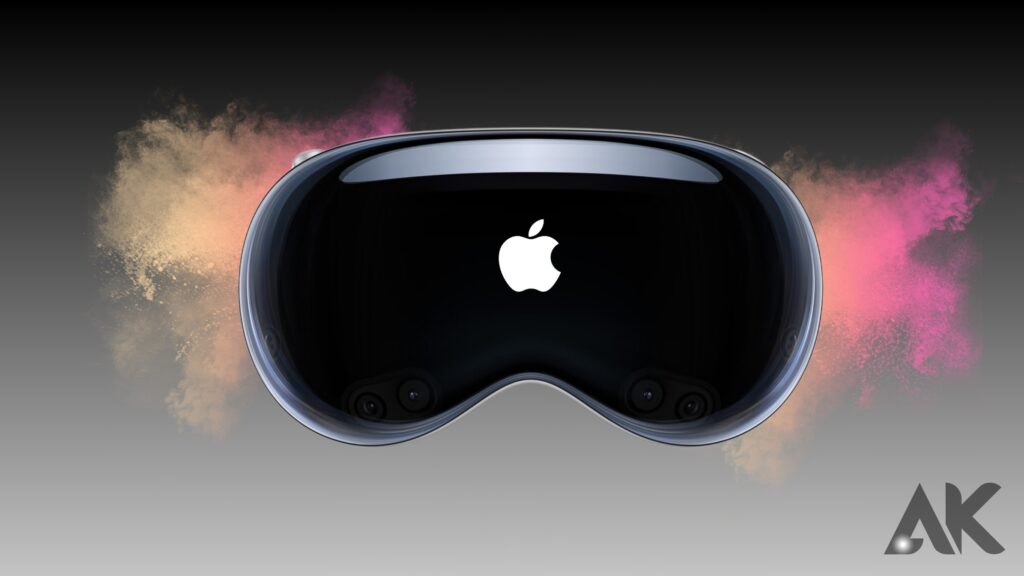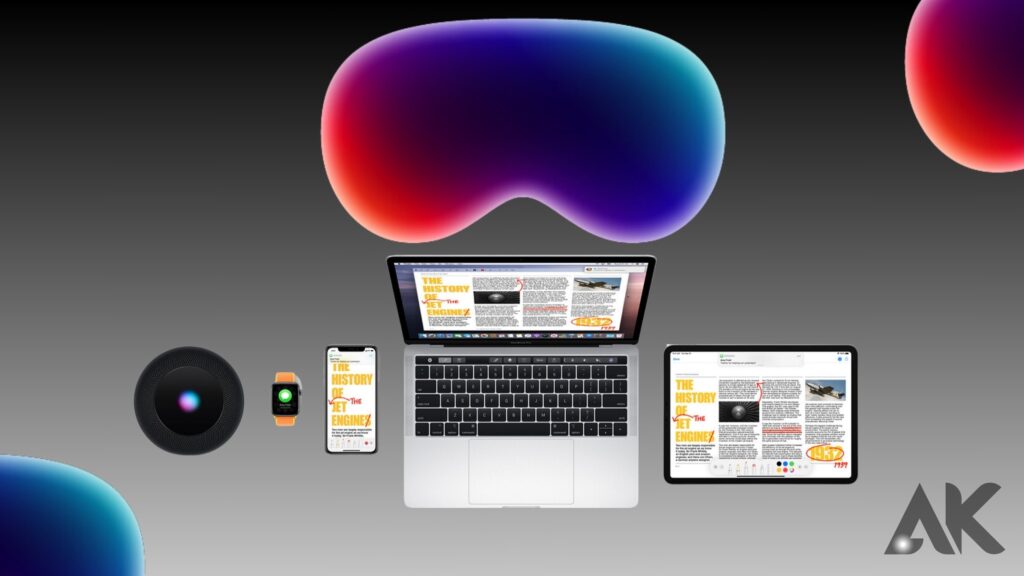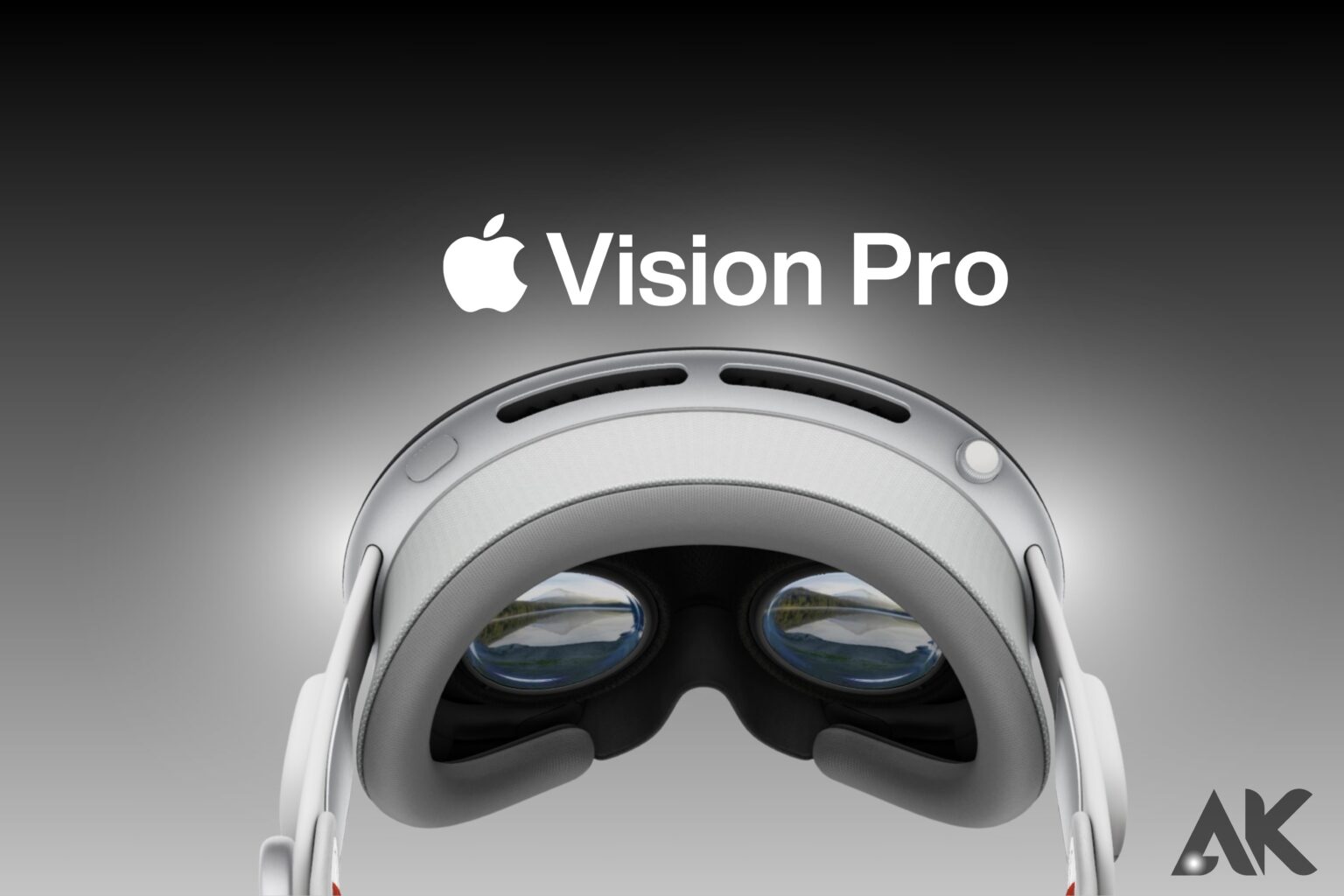The Vision Pro, Apple’s newest device—no, it’s not a VR headset—is now available to anybody in the US with an additional $3,500 to spare. The Vision Pro is more accurately described as a “spatial computer” by Apple. No one else has any idea what it means either.
As an overarching concept, “spatial computing” describes the seamless integration of the digital and physical realms. Apple claims that the Vision Pro’s three-dimensional interface expands the user’s perception of the digital information they’re viewing—be it a movie or their social media feed—to include their actual environment.
The Vision Pro and the Apple ecosystem

So, what is required to utilize the Apple Vision Pro as a spatial computer, and how does it operate? The bright side is that this $3,500 gadget will be fully functional when you get it. It is not necessary to own an iPhone or a Mac to use it. The complete operating system is housed inside; it employs hand gestures for controls, and it has an M2 processor within.
Unlike other virtual reality headsets, which rely on a powerful gaming PC with a dedicated graphics card to manage the processing needs of two high-resolution displays, this one doesn’t. Some programs, like Varjo Aero and the Valve Index, need a computer to function. Similar to the Vision Pro, some standalone VR headsets use low-power processors, such as the Qualcomm Snapdragon XR2 Gen 2 CPU. One such device is the Meta Quest 3.
To access all of the capabilities, most smart glasses also need a phone connection. The Ray-Ban Meta Smart Glasses don’t need a phone to capture videos, but you’ll need to connect them to take calls, send photos, and use Meta AI. A phone or other device must be linked to smart glasses like the Xreal Air 2 for them to receive electricity and a video feed.
The difference between virtual reality and spatial computing

The two concepts of augmented and virtual reality are distinct user experiences, yet they are both part of the spatial computing category.
Immerse yourself in a digitally recreated, three-dimensional, and interactive environment with virtual reality. In this episode of CNBC Make It, computer scientist and entrepreneur Louis Rosenberg discusses his 30+ years of effort and innovations in the field of augmented and virtual reality. “Our Next Reality: How the AI-powered Metaverse Will Reshape the World” is a new book that Rosenberg co-authored and is set to be released in March.
This isn’t like seeing a 3D film. According to him, it takes the place of the actual world and allows you to engage with it.
Contrarily, augmented reality refers to the practice of superimposing digital information onto physical environments, usually using the camera of a mobile device or augmented reality goggles.
Consider the augmented reality (AR) smartphone game Pokémon Go, which puts imaginary Pokémon in the hands of players by letting them see them on their phones as if they were there.
No suspension of disbelief is required, but you do get the impression that a Pokémon monster lurks about you. Rosenberg claims that even though you don’t truly think it’s there, it allows you to experience virtual information in your actual environment.
According to Rosenberg, the Vision Pro is more than just a mixed reality headset because of its innovative operating system, which enables users to manage applications using their fingers and eyes. This distinguishes it from other VR and AR headsets.
He believes that Apple is trying to differentiate itself from its competition by branding itself differently and highlighting its unique features that contribute to productivity.
He elaborates by saying that Apple is marketing the Vision Pro not as a portable media player but as a serious computer that may replace a desktop or laptop.
What Apple’s Vision Pro may signal for the future
Although widespread adoption of the Vision Pro may be delayed, Rosenberg argues that Apple’s move into the field shows the company’s belief in the ultimate mainstreaming of augmented and virtual reality.
Since humans do not intend to spend all day staring at little screens, he believes that mixed reality, immersive environments, and immersive experiences will inevitably become the norm.
Apple may be the most well-known tech firm testing the waters with its Vision Pro, but it certainly isn’t the only one. One example of the mixed reality activities offered by Meta’s Quest 3 headgear is playing a virtual piano on your coffee table or engaging in immersive gaming.
More generally, new rules for the use of the technology may be necessary in the future when a corporation controls what you see, hear, and interact with via their headsets.
Imagine you’re living in this future when the line between reality and virtuality is blurred, thanks to top-notch headgear that effortlessly combines physical and digital elements. Imagine strolling down the street and seeing what seems to be a genuine person sipping a certain Coke. However, it’s a virtual advertisement for the same brand of soda.
“There are a lot of potential dystopian scenarios,” Rosenberg remarks. “We must give serious consideration to the possibility of abuse, and appropriate policies and regulations must be put in place to ensure that individuals are not manipulated by the authority they entrust to outside entities.”
Vision Pro with a Mac
Even though it doesn’t support macOS, the Vision Pro is an entirely capable spatial computer. Therefore, connecting your Mac or MacBook could still be a good idea, particularly if you want to type quickly and be more productive. In Vision Pro, Apple allows you to see your Mac desktop in a window similar to remote desktop software. Although it cannot enlarge the window as an external monitor would, it can mirror the window and give you complete control over it. Also, a wireless Bluetooth keyboard is an alternative that you might consider.
Therefore, you may still use your computer while wearing the Vision Pro headset to access apps that aren’t currently accessible in the Vision App Store. This implies you may use your Mac to access applications on your iPhone, iPad, and native Vision Pro apps, as well as apps for macOS.
An additional battery pack is included with the Vision Pro; however, it is not included with the device itself.
Owning additional Apple devices will give you an advantage when it comes to enjoying the Apple ecosystem. To access your picture collection, music playlists, contacts, and messages, similar to what you would see on an iPhone or Mac, just log into iCloud when you set up your Vision Pro.
Conclusion
Apple’s Vision Pro is a $3,500 device that combines augmented reality and virtual reality, offering a three-dimensional interface that makes users feel as if digital content is present in their physical world. The device is complete right out of the box, with an M2 processor, hand gestures for controls, and a self-contained operating system. It differs from some VR headsets that require the performance of a gaming PC with a fast, discrete graphics card. The Vision Pro’s unique operating system allows users to interact with and control apps with their fingers and eyes, making it a spatial computer rather than just a mixed-reality headset.
While the Vision Pro may take time to be widely adopted, Apple’s entry into the space suggests that augmented reality and virtual reality will eventually become mainstream. The company’s entry into the space may signal a future where a company can control everything you see, hear, and interact with via its headsets, requiring new regulations about how the technology is used.
FAQS
What is the purpose of Apple Vision Pro?
According to ZDNet’s Matthew Miller, Vision Pro is best suited for those whose workflows are centered on single or two apps, such as day traders or content developers. His other suggestions included using it to view films on planes, play numerous sports games simultaneously, and explore virtual worlds.
Is the Apple Vision Pro a standalone device?
The Quest Pro and Quest 3 from Meta, the HTC Vive XR Elite from HTC, and the high-end PC VR headsets from Varjo all provide mixed-reality features. From what I’ve seen, Apple’s Vision Pro offers the most cutting-edge combination of mixed reality on a single device.

